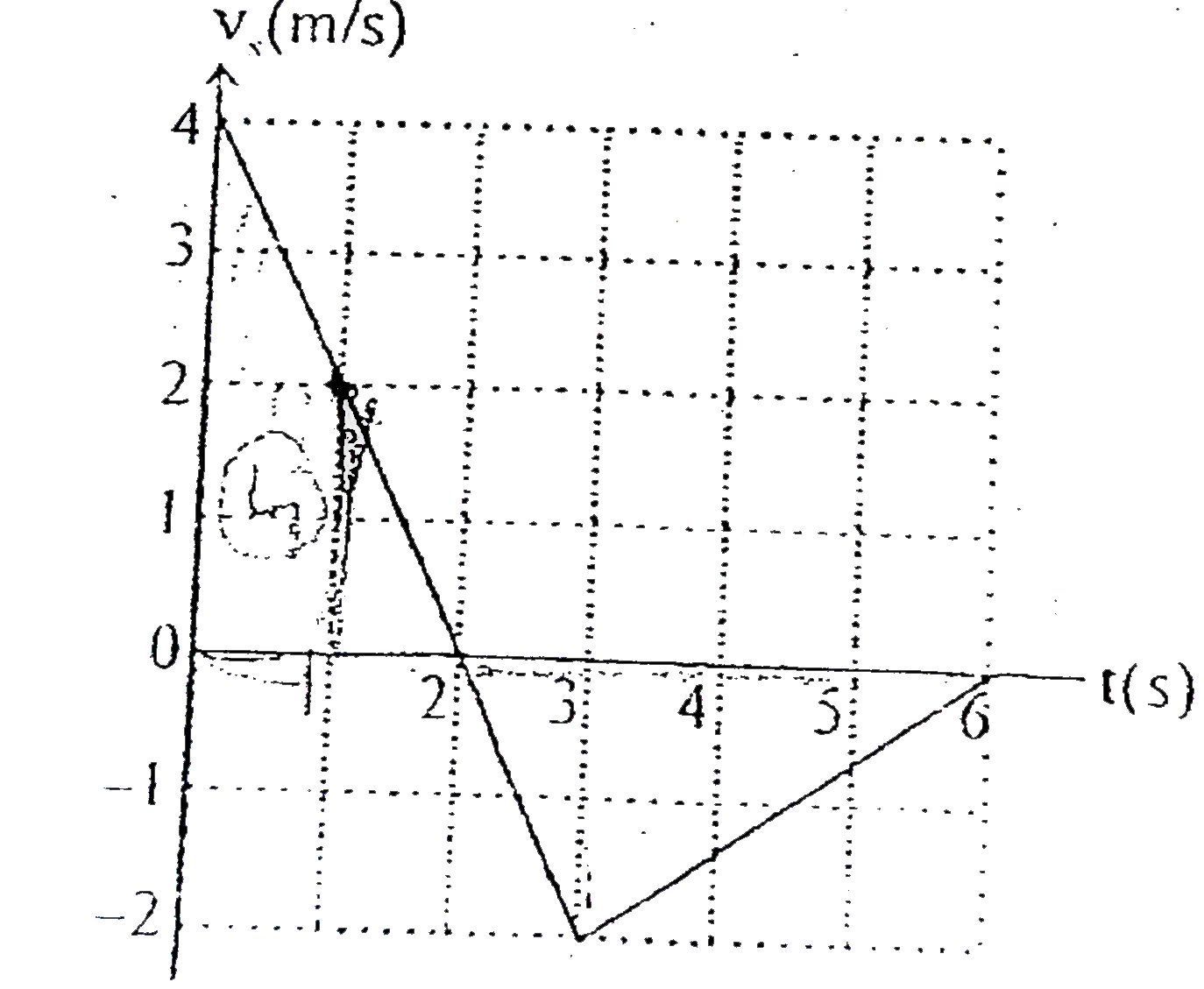The velocity of a particle moving on the x-axis is given by v=x2+x, where x is in m and v in m/s. What is its position (in m) when its acceleration is 30m/s2.
The correct Answer is:2
To solve the problem, we need to find the position x of a particle when its acceleration a is 30m/s2. Given the velocity function:
v=x2+x
we can find the acceleration by differentiating the velocity with respect to time. Let's go through the solution step by step.
Step 1: Write down the given velocity equation
The velocity of the particle is given by:
v=x2+x
Step 2: Differentiate the velocity with respect to time
To find the acceleration, we need to differentiate the velocity with respect to time. We can use the chain rule:
a=dvdt=dvdx⋅dxdt
Step 3: Differentiate v with respect to x
Now, we differentiate v with respect to x:
dvdx=2x+1
Step 4: Substitute into the acceleration formula
Now substituting back into the acceleration formula:
a=(2x+1)⋅v
Since v=x2+x, we can substitute v into the equation:
a=(2x+1)(x2+x)
Step 5: Expand the expression for acceleration
Now we expand this expression:
a=(2x+1)(x2+x)=2x3+2x2+x2+x=2x3+3x2+x
Step 6: Set the acceleration equal to 30m/s2
Now we set the expression for acceleration equal to 30:
2x3+3x2+x=30
Step 7: Rearrange the equation
Rearranging gives us:
2x3+3x2+x−30=0
Step 8: Solve the cubic equation using trial and error
We can solve this cubic equation using trial and error. Let's try some integer values for x:
- For x=1:
2(1)3+3(1)2+1−30=2+3+1−30=−24(not a solution)
- For x=2:
2(2)3+3(2)2+2−30=2(8)+3(4)+2−30=16+12+2−30=0(this is a solution)
Step 9: Conclusion
Thus, the position x when the acceleration is 30m/s2 is:
2m
The velocity of the particle is given by:
To find the acceleration, we need to differentiate the velocity with respect to time. We can use the chain rule:
Now, we differentiate v with respect to x:
Now substituting back into the acceleration formula:
Now we expand this expression:
Now we set the expression for acceleration equal to 30:
Rearranging gives us:
We can solve this cubic equation using trial and error. Let's try some integer values for x:
Thus, the position x when the acceleration is 30m/s2 is:
Topper's Solved these Questions
- MOTION IN STRAIGHT LINEBOOK - AAKASH INSTITUTE ENGLISHCHAPTER - MOTION IN STRAIGHT LINEEXERCISE - Assignment (SECTION - H)
9 Videos
- MOTION IN STRAIGHT LINEBOOK - AAKASH INSTITUTE ENGLISHCHAPTER - MOTION IN STRAIGHT LINEEXERCISE - Assignment (SECTION - I)
3 Videos
- MOTION IN STRAIGHT LINEBOOK - AAKASH INSTITUTE ENGLISHCHAPTER - MOTION IN STRAIGHT LINEEXERCISE - Assignment (SECTION - F)
2 Videos
- MOTION IN A STRAIGHT LINEBOOK - AAKASH INSTITUTE ENGLISHCHAPTER - MOTION IN A STRAIGHT LINEEXERCISE - ASSIGNMENT (SECTION - D)
15 Videos
- MOVING CHARGE AND MAGNESIUMBOOK - AAKASH INSTITUTE ENGLISHCHAPTER - MOVING CHARGE AND MAGNESIUMEXERCISE - SECTION D
16 Videos
Similar Questions
The velocity of a particle moving on the x− axis is gienv by v=x2+x( for x>0) where v is in m/s and x is in m. Find its acceleration in m/s2 when passing through the point x=2m
View SolutionThe speed v of a particle moving along a straight line is given by a+bv2=x2 where x is its distance from the origin. The acceleration of the particle is
View SolutionThe velocity of a particle defined by the relation v = 8 -0.02x, where v is expressed in m/s and x in meter. Knowing that x = 0 at t = 0, the acceleration at t=0 is
View SolutionIf the velocity of a paraticle moving along x-axis is given as v=(4t2+3t=1)m/s then acceleration of the particle at t=1sec is :
View SolutionThe velocity of a particle moving along x-axis is given as v=x2−5x+4 (in m/s) where x denotes the x-coordinate of the particle in metres. Find the magnitude of acceleration of the particle when the velocity of particle is zero?
View SolutionThe potential energy of particle of mass 1kg moving along the x-axis is given by U(x)=16(x2−2x) J, where x is in meter. Its speed at x=1 m is2m/s. Then,
View SolutionVx is the velocity of a particle of a particle moving along the x−axis as shown. If x=2.0m at t=1.0s, what is the position of the particle at t=6.0s?

View SolutionThe velocity (v) of a particle of mass m moving along x-axis is given by v=α√x, where α is a constant. Find work done by force acting on particle during its motion from x=0 to x=2m :-
View SolutionVelocity of particle moving along x-axis is given as v=(x3−x2+2) m/sec. Find the acceleration of particle at x=2 meter.
View SolutionFind the velocity of a particle moving on a line at t = 3 seconds , if its position s is in m when
s = log t and
View Solution
